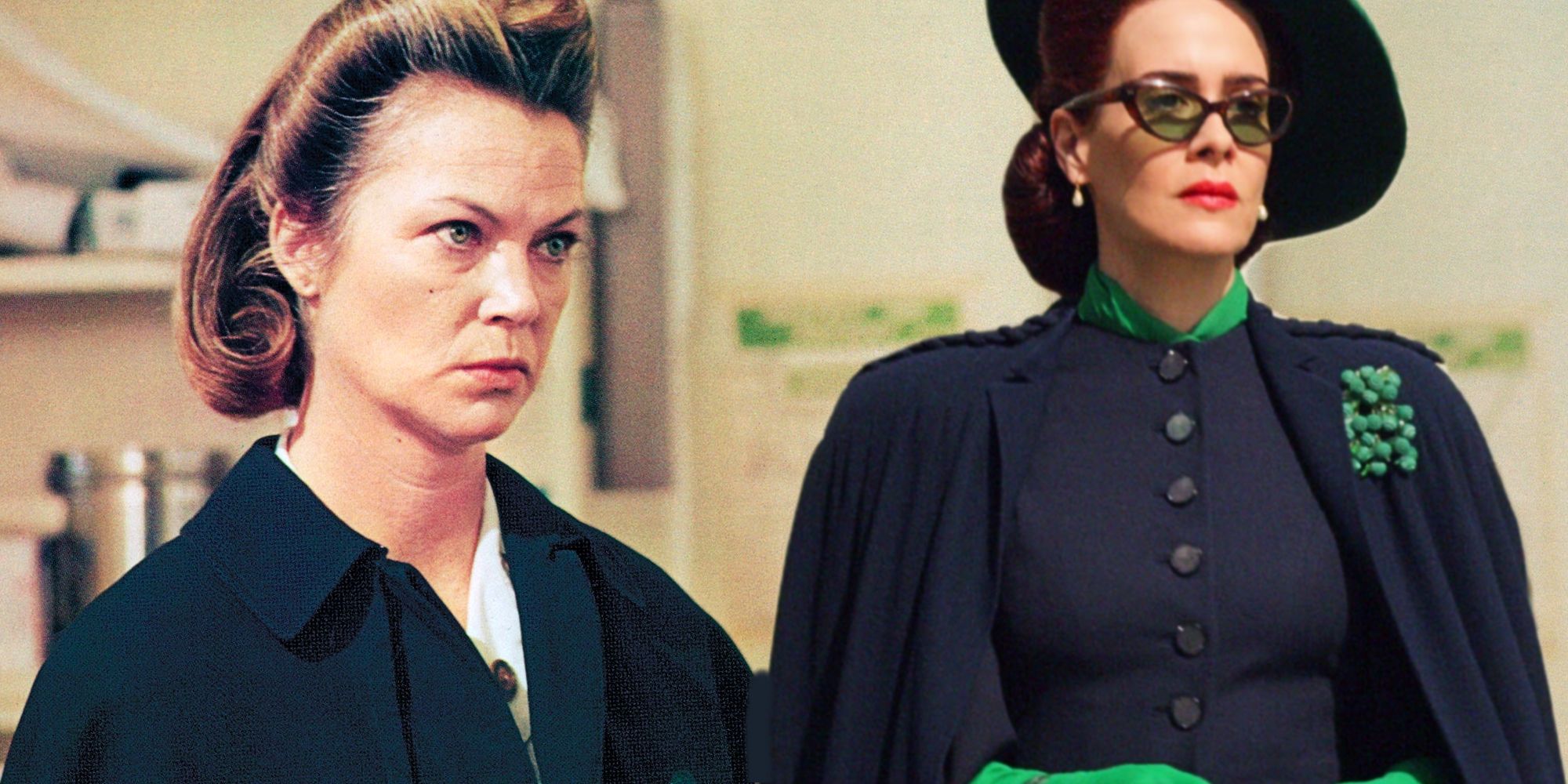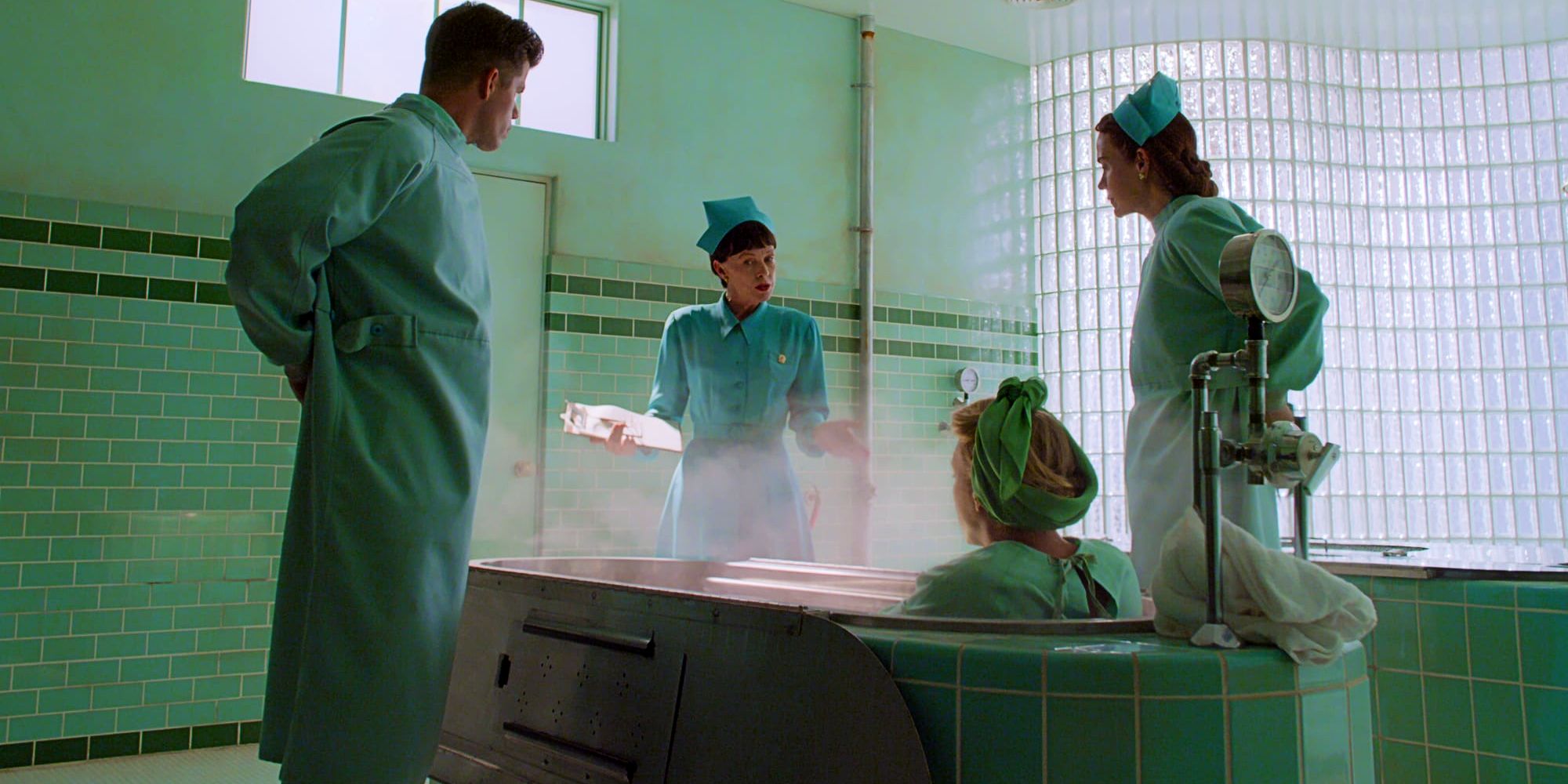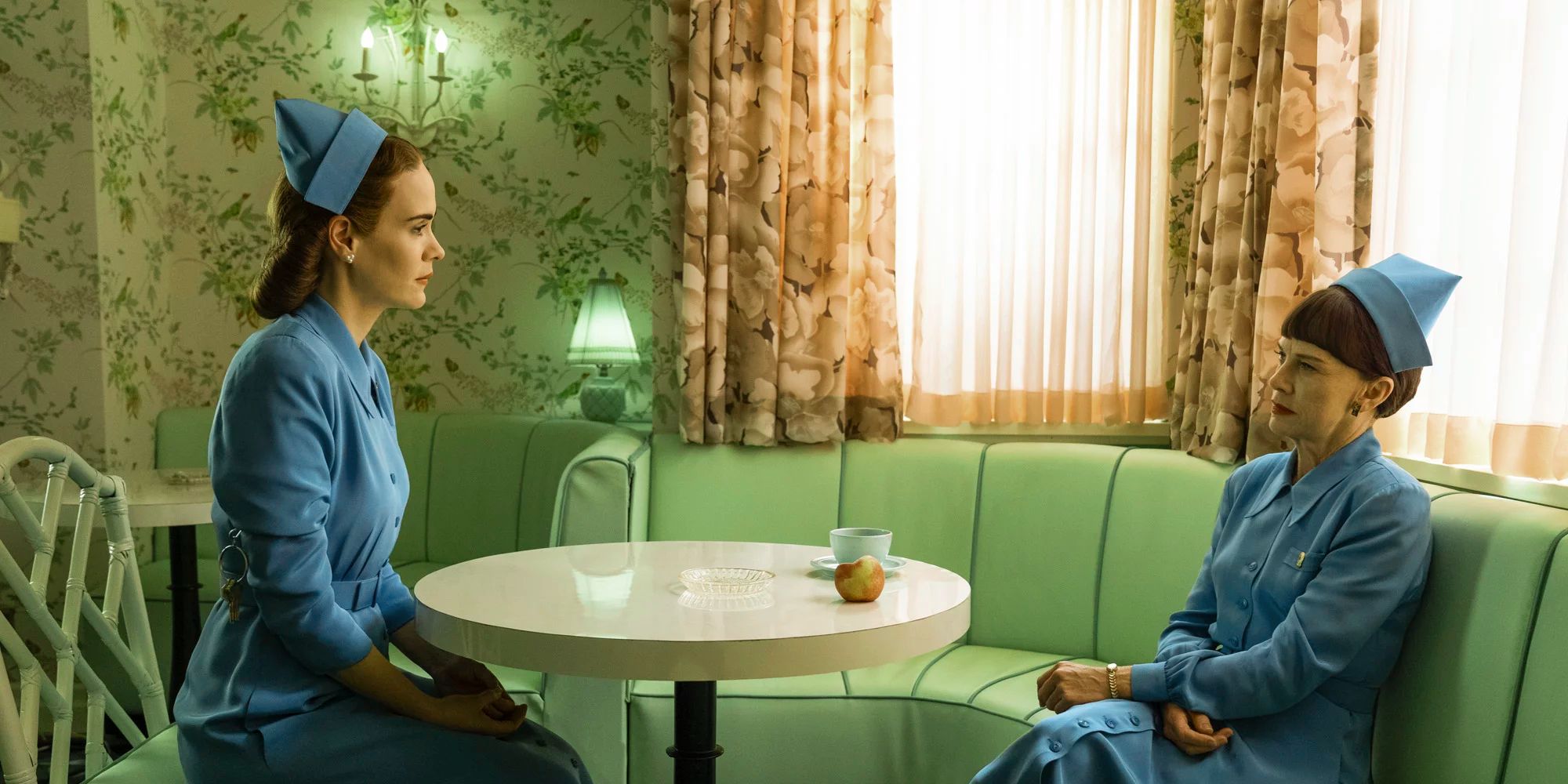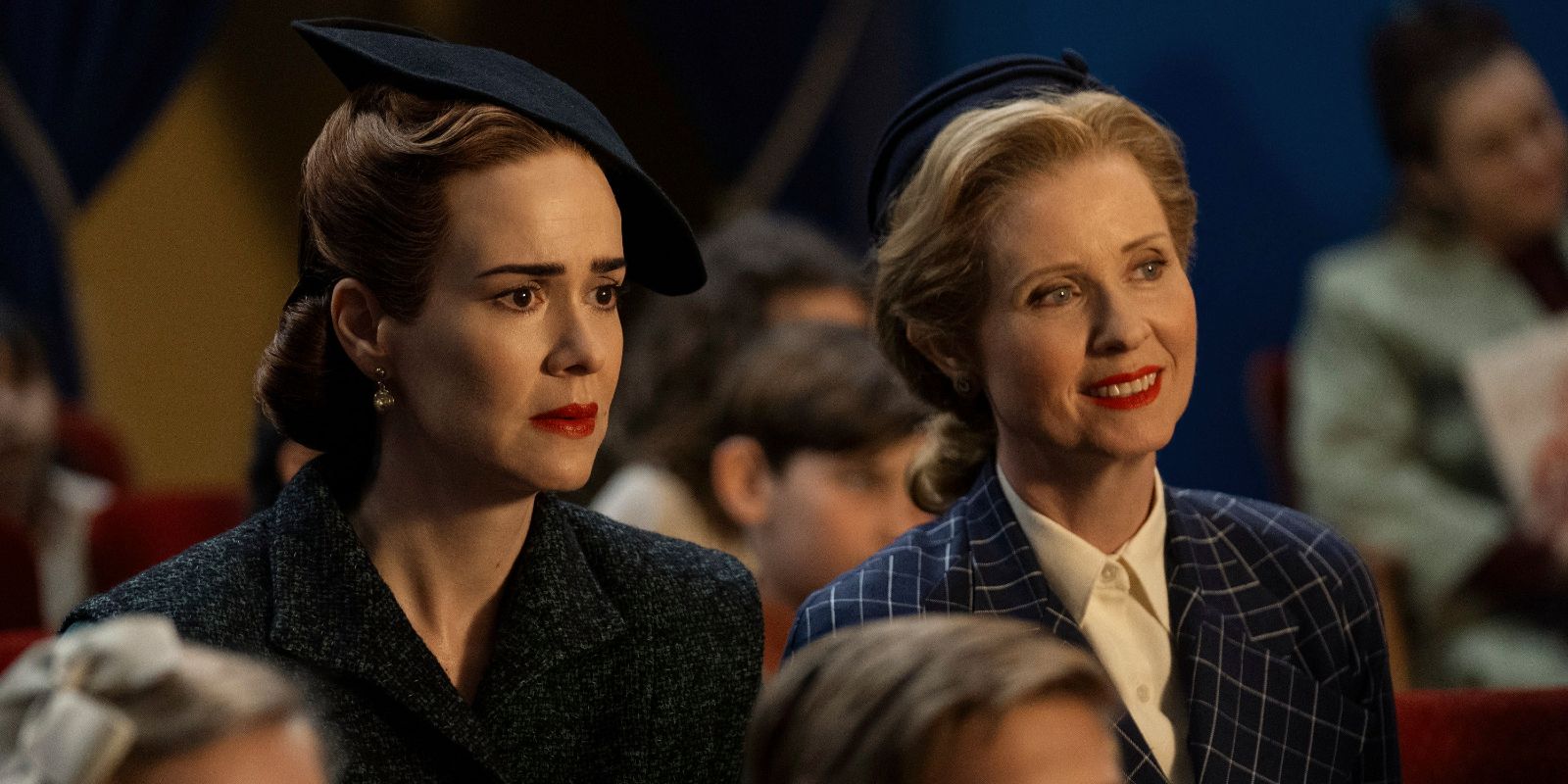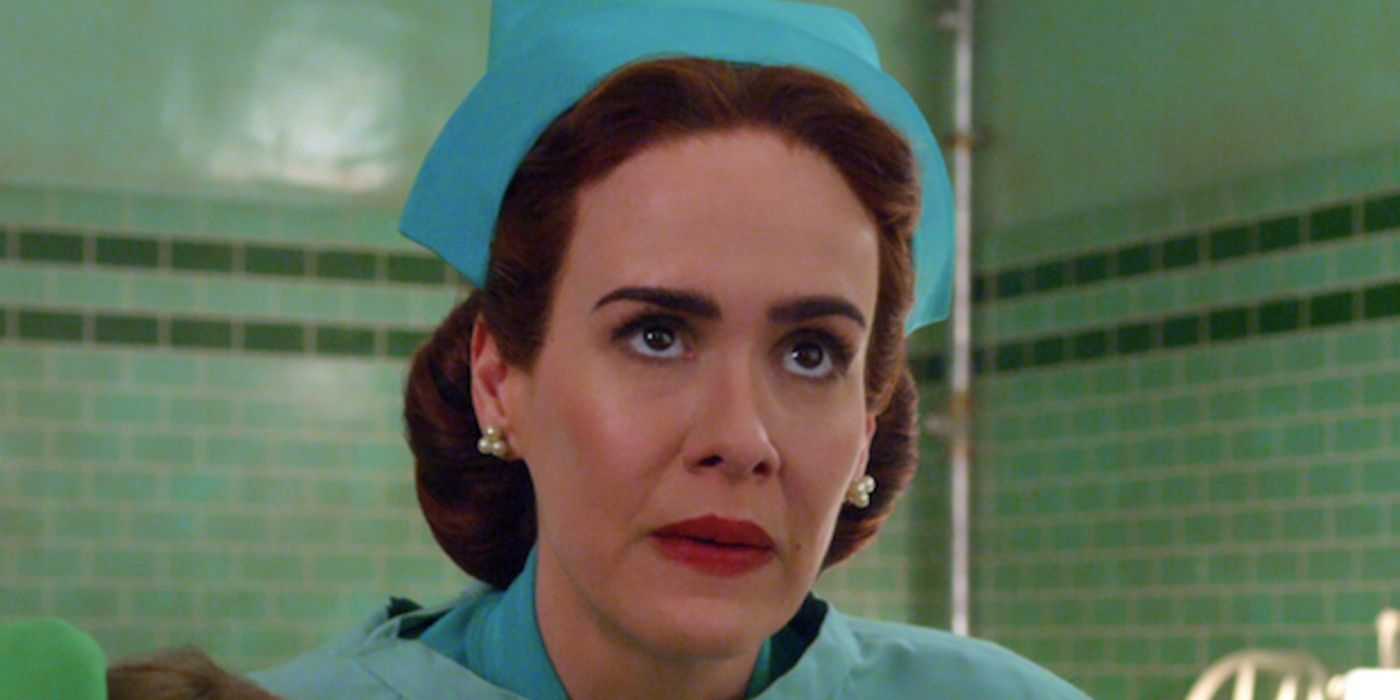Here’s every One Flew Over The Cuckoo’s Nest references in Ratched. In order to understand the references in Ratched, one needs to delve into Nurse Ratched’s history in the realm of literature and cinema, namely Ken Kesey’s 1962 novel and Miloš Forman’s 1975 adaptation starring Jack Nicholson as Randle McMurphy. Ratched traces back the narrative trajectory of Nurse Mildred Ratched, who has been hailed as one of the greatest movie villains of all time due to her cold-hearted demeanor and need to control the workings of the psychiatric hospital she oversees as Head Nurse.
Set 16 years before the events of Cuckoo’s Nest, Ratched follows the titular character (Sarah Paulson), who is fresh off her years as an Army nurse during World War II. However, apart from Paulson’s character, the series branches into wildly varying directions, introducing a horde of new characters that trigger the narrative. As Ratched is a prequel to the events of Cuckoo’s Nest, director Ryan Murphy wanted to span the story across three more seasons. While there is no word on when or if those seasons will ever arrive on Netflix, there are Cuckoo's Nest references in Ratched from both source materials, especially Ratched’s motivations that drive her throughout the show.
Critique Of Psychiatric Techniques Of The 1960s
Written in 1959 during the Civil Rights Movement, One Flew Over The Cuckoo’s Nest is a scathing critique of how psychiatry was approached in America during the time. The various authorities that control individual freedom in mental institutions are referred to as “The Combine,” treating patients as cogs in a machine. The Cuckoo's Nest references in Ratched show subtle, deeply-entrenched coerciveness exists in the character of Dr. Richard Hanover, who conducts heinous experiments on patients at Lucia State Hospital. Like in One Flew Over the Cuckoo's Nest, the ultimate authority of “The Combine” is personified by Nurse Ratched herself, who manipulates patients and hospital staff alike to rise through the ranks of the institution.
It is also interesting to note that the novel presents mental institutions as instruments of oppression, a kind of torture chamber with invisible forms of discipline that rob away remnants of individuality. This is exemplified in the fate of McMurphy, who pays the price of standing up to Ratched’s autocratic cruelty by undergoing a lobotomy at the end of the film. As lobotomy is Midred’s ultimate weapon against McMurphy or anyone who dares to subvert her established order, Ratched sets up the scene for the same heavily, which will ultimately give way to Nurse Ratcheds bruising, sadistic standard of medical care for which she's known.
The Set Design And Aesthetic Of Lucia State Hospital
The introduction of McMurphy in Cuckoo’s Nest allows audiences a peek beneath Nurse Ratched’s layered persona. Through McMurphy’s interactions with the patients, one understands who Ratched really is and what she stands for. From referencing her as “Big Nurse,” which is a play on the Orwellian Big Brother, to revealing her pleasure in restricting patients’ access to necessities, McMurphy, along with the narrator, Chief, conjures the prison-like atmosphere and dread that pervades the institution. These Cuckoo's Nest references in Ratched were captured through the hospital’s set design, along with Mildred’s wardrobe, which consists of raw jewel tones that are mirrored by the hospital’s partitions, window remedies, and floors.
This was deliberately done to reflect McMurphy’s outlook on mental institutions - a site of “violence, oppression, lust, envy, greed, and evil.” On one hand, there's a humane and progressive treatment for people who need it; on the other, there's an invisible, murky underbelly that pervades throughout, especially in the actions of Ratched, who encourages a patient to commit suicide for her own gains. Furthermore, the duality in her character is sometimes soft and feminine, but mostly structural and hard-tailored. Another reference to the film is when Ratched places the hospital’s key ring on her arm, which mirrors the exact way in which Louise Fletcher’s character does so.
“Angel of Mercy” — The Duality Of Nurse Ratched
In Cuckoo's Nest, Nurse Ratched comes off as a complex character who is hard to read, her manipulations progressing subtly through the film’s narrative. When McMurphy posits the idea that the patients should watch the World Series instead of attending group therapy, Nurse Ratched transfers the onus to the patients, welcoming the idea of a voting system, which might come off as democratic at first, but is anything but. Ratched is aware of the visceral fear in the hearts of the patients, which prevents them from standing up against her, as the consequences of doing so under her regime would be extremely disastrous.
The Cuckoo's Nest references in Ratched take this duality of character further and make it an integral part of her character motivations. She is kind, cruel, murderous, and empathetic all at once, establishing that prior to the events of Cuckoo’s Nest, her actions could ultimately be redeemable, especially via her love for Gwendolyn Briggs (Cynthia Nixon). While not blind to her cruelty, Ratched’s past foreshadows her machinations, as a kind of feral loneliness drives her to assume the mantle of an “angel of mercy.” It is only a matter of time before Mildred unleashes her wrath-fueled agony to wash away the kindness and love residing within her.
Ratched Isn't The Only Show To Heavily Reference Cuckoo's Nest
One Flew Over the Cuckoo's Nest remains one of the most beloved films in history, ranking in the top 20 on IMDb. There are moments that remain iconic and memorable almost 50 years later. It is surprising there aren't more Cuckoo's Nest references in Ratched. However, there are references to Cuckoo's Nest in other movies and TV shows over the years, from Gossip Girl to Ted Lasso. The Simpsons based almost an entire episode on it with "Stark Raving Dad." When Mr. Burns commits Homer to a mental asylum for being a "free-thinking anarchist," Homer finds himself in a situation very similar to Cuckoo's Nest.
Transformers creator Bob Budiansky said the physician Ratchet was named after Nurse Ratched. He said a lot of the Transformers names came from his own experience of pop culture, with Ratchet inspired by Nurse Ratched and Ironhide from the old TV show Ironside. "I was trying to humanize them, give them relatable qualities." (via The Guardian).

